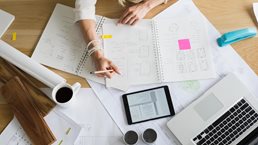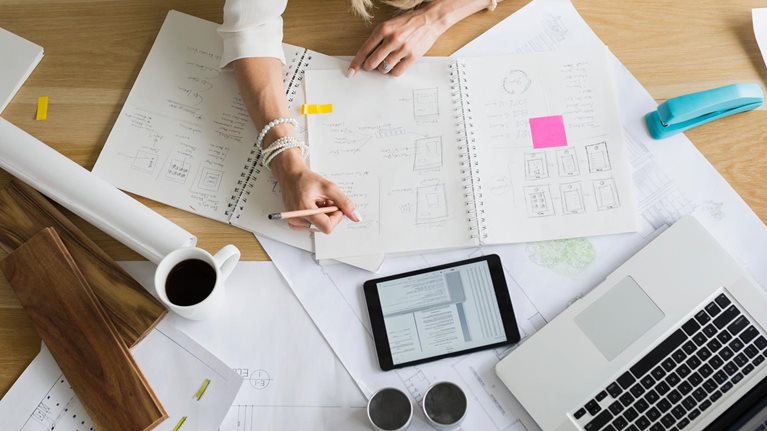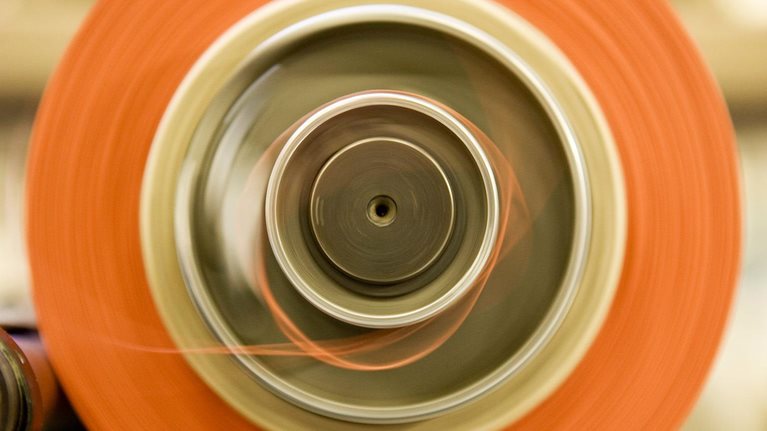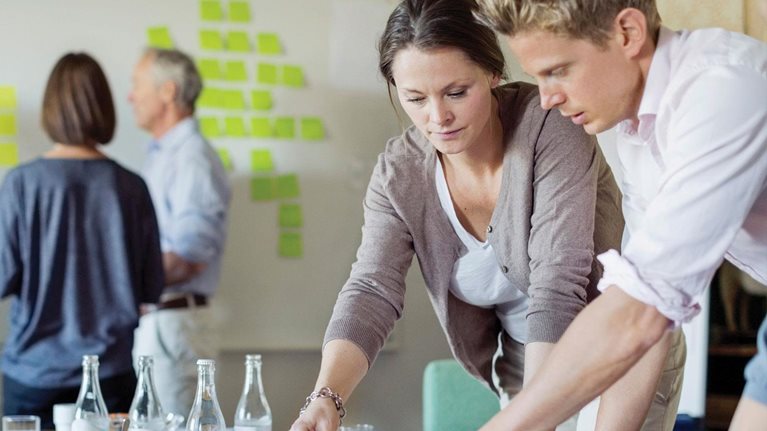Good design can do wonders to enhance user experiences. By focusing on customers and their preferences, designers can also drive growth and uncover new business opportunities, helping companies innovate for future user needs. In this episode of the McKinsey Podcast, Sara Andersson and David Crafoord, of Veryday—a design consultancy within McKinsey’s Design Practice—and Tomas Nauclér, a senior partner in the Sustainability and Resource Productivity Practice, speak with Josh Rosenfield about how companies can design for value and sustainability.
Podcast transcript
Josh Rosenfield: Hello, and welcome to the McKinsey Podcast. I’m Josh Rosenfield, an editor with McKinsey Publishing. Today we’ll be talking about design—specifically how companies can use good design practices to create more value, whether by driving growth, providing better customer experiences, or increasing the productivity of the energy and resources they use.
Here to tell us more about designing for value and sustainability are two members of McKinsey’s Design Practice. Sara Andersson is a senior designer, and David Crafoord is a director of industrial design.
Sara Andersson: Hi.
David Crafoord: Hello, hello. David here.
Josh Rosenfield: I’m also delighted to be joined by Tomas Nauclér, a senior partner with the Sustainability and Resource Productivity Practice at McKinsey.
Tomas Nauclér: Hello.
Josh Rosenfield: Design is one of the buzziest terms in business, but it’s also a term that gets used across a wide range of disciplines. So it can mean different things to different people. David, how do you define design?
David Crafoord: Design is a process. The idea is to develop purposeful and innovative solutions that embody functional and aesthetic demands and that are based on needs and the intended user.
Want to subscribe to The McKinsey Podcast?
It’s applied on digital and physical services and processes as well as environments. We focus a lot on genuine user insight to create new business opportunities with the aim to build strong brands and sustainable solutions. So we do put people in the center, and it’s natural for us to balance user experiences as well as product life cycles.
Josh Rosenfield: How does that differ from the way that companies ordinarily think about or practice design?
Sara Andersson: The first component here that we’d like to emphasize is the thorough people understanding. What we advocate is consumer understanding that goes beyond knowing what people are doing right now in order to understand how to innovate for future user needs. It’s valuable to know why people are doing what they do, how they feel about it, and what they dream of doing in the future. The best way to do this is to spend time with people.
You also need to get to know the needs of other stakeholders that influence your process and solutions. This might be, for example, suppliers or manufacturers or retailers.
David Crafoord: Some people think that users don’t really know what they actually need. Part of the design process is to find that sort of tacit knowledge of what people want and desire.
Sara Andersson: We have a second component as well that’s an iterative process with many loops of “concepting” and testing. A typical way to start out would be with just pen and paper, sketching concepts or scenarios. This could rapidly be followed by first prototypes—simple physical models or paper mock-ups that present the digital concept. You could even act out concepts if it’s a service you’re designing, to get a feel for it. But the point is to get it done quickly, and to get the experience and the feedback from users. Then refine and test again. The people-driven approach is key, together with system thinking. We’re creating value from different perspectives in this way. We create value for the users and for all the other people involved in the process. We create value for the business that is providing the solutions. And the transformation that many businesses are starting to commit to these days is to add value also from a sustainability perspective. The exciting thing is the synergies that you can find here.
Josh Rosenfield: You’ve talked about a design process that’s highly customer oriented. How does this approach ultimately help companies to improve their margins and market share?
Tomas Nauclér: Traditional product companies use design to create a good-looking or palatable product that customers want to have. They are just in the discovery process of understanding how the experience of using the products, and using them end to end, will drive adoption and growth.
Tesla is a good example of a product that is not designed purely as a nice-looking car but actually as an experience of how you use it. In the extension of that, our clients need to not only think about their traditional product but also the whole chain of how mobility, as an example, is being consumed.
Would you like to learn more about our Design Practice?
Josh Rosenfield: How does that approach to design create more value than an approach that’s more conventional?
Tomas Nauclér: We’ve done these analyses for different industries where we’ve said, “What is the waste in a total system end to end?” You probably have heard the example where a commercial vehicle is used 30 percent of the time—it is actually running only 40 percent of the time, or 40 percent of the vehicle is filled with goods. At rush hour, it’s only occupying 10 percent of the pavement in a city. If we could have a seamless end-to-end experience and movement of goods, we could probably take those wastes down by a factor of three to five to ten. That is basically what the sustainable system of the future looks like.
David Crafoord: Moving water is a huge cost when it comes to energy. I was working with one of the market leaders in pumping water. Together with the technical team, we reduced the energy by 50 percent. The thing was that the pumps are put into wastewater holes, and it’s very dirty. What happens is that the dirt gets stuck onto the pumps, so it actually insulates the pumps, so they get overheated. We added an internal pump that cleaned the water around the engine. So we actually cooled the engine rather than creating a system that was heating up the engine. By adding a second layer around the engine, we could cool it down with the water that we were pumping. That made a huge difference.
Tomas Nauclér: Typically, what we’ve found is that if you have the right design, at the right price point, that is driving sustainability and customer experience in a demonstrable way—that is a key driver of growth for your offering.
Josh Rosenfield: Can you take us through an example or two of a design process that was successful in adding value for customers, for the company, and for a wider set of stakeholders?
Sara Andersson: I’d like to run you through a project that we did for Arlanda, Stockholm’s international airport. We developed a new departure-sequencing tool (DST) that helps air traffic controllers to better plan and manage all departures in the airport.
When we started this project, the current way of working was very old and very analog. Air traffic controllers were moving and stacking paper labels that represented flights. The goal was to create a system that could improve the air traffic controllers’ precision when it came to predicting takeoff time, so that traffic could be tighter and safer. We started out gaining a thorough understanding for the air traffic controllers’ task, what their major challenges were, and what they would like to improve about their situation. Then we started developing a new flight-labeling system, quickly prototyping, and also working in a very collaborative way with the air traffic controllers in several workshops, in tests of the wire frames, in order to create a common understanding and to share ideas. We ended up entirely reinventing the mental model for how to perceive runways and upcoming flights. The way users interact with this content is easy and intuitive.
The value for these users is very clear. The new DST greatly facilitates their task, and they love working with it. The new system focuses on getting the aircraft from their terminals according to the timetable, and up in the air without getting stuck in a queue. The time between leaving the terminal and being up in the air is greatly reduced, and fuel consumption is reduced as well. A reduction of just one minute in queue per departure results in reduced fuel consumption of at least 1.5 million tons of fuel per year. This, in turn, gives a reduction of carbon dioxide emissions of about 3.5 million tons per year, which makes a big difference for both local environments and the climate.
Tomas Nauclér: We will most certainly see this development in other sectors. The same discussion is happening in the marine sector, where many players are thinking about how to seamlessly integrate the ship from sea, all the way to port, and get the material out of the port, without all the lead-time losses and costs associated with waiting and holding.
Josh Rosenfield: Those sound like instances where you helped a business come up with new ways of meeting customer needs. Are you seeing any other examples of this?
Sara Andersson: We have been doing a project where we set up a living lab. The background is urbanization. People will have to live in much smaller spaces. Cities will be more densely populated. But with these smaller spaces come a lot of challenges. So we set up this living lab and had people living it, testing future solutions that might facilitate small-space living and finding out how people felt about them. One solution that we implemented in the living lab was moving walls that could flexibly create a social area. They helped families to create boundaries between private spaces and social ones.
Josh Rosenfield: That’s a good example of how you used customer feedback to design better products. It’s also becoming easier to collect feedback from products directly, in real time, using onboard sensors and connectivity. How do you see the Internet of Things changing product design and performance?
Sara Andersson: I really believe that the ability of connected products to provide a wide range of feedback—that this will surely be vital in the shift toward designing more effective products and processes, circular ones. When the whole idea of a circular economy emerged in the ’70s, we were of course far from connected products. Now we have sensors already integrated in a lot of products that allow us to learn about usage patterns. It allows us to track locations and to measure performance. In the product as service scenario, sensors in consumer products could notify the service provider of needed maintenance, sparing the users from taking any action at all. With information generated from sensors on usage patterns, users can also be advised on better ways of using their products, or get information on how they might benefit from a product update.
Tomas Nauclér: A consumer example could be that we will have clothes that are IoT synced, where you can pay for use, or where you could even have somebody pinging you and asking you, “Can I buy it back and sell it to somebody else?”
Josh Rosenfield: Shifting to a circular economy is an interesting notion. It’s going to require whole systems to be redesigned, so companies, their suppliers, and their customers can easily use resources over and over.
Sara Andersson: We believe strongly that many companies will need to make a shift from selling products to providing these products as services. Retaining ownership over your materials has an obvious financial value. You will reduce or even eliminate, perhaps, your need for raw materials. But what we also see happening with the growth of the sharing economy is a changing consumer mind-set. People are increasingly looking to free themselves of product ownership. They prefer to purchase the functionality or experience of a product instead.
Most people now use services like Spotify and Netflix that give them the content they want. In the mobility area, we also see a strong and growing trend toward car-sharing and mobility-on-demand services.

The power of design thinking
For businesses, the value is in the materials they stay in control of. But there is also tangible value in the relationships they build with their customers when offering products as services. There would be a continuous dialogue that you’re having with the user.
David Crafoord: There are also very interesting points when it comes to the self-driving cars. Normally, many people see the car as an extension of themselves and as a status symbol. But what happens when you’re not driving the car yourself? Are you considering it to be a status symbol? Or is it just a transportation utility?
It will be a huge paradigm shift for society in general, because from a sustainability point of view, a self-driving car will create much less CO2 emissions. It will save a lot of lives when it comes to safety.
Josh Rosenfield: It seems like more companies are adopting design approaches that are more customer oriented and developing concepts that create more value for them and for their customers. As a practical matter, how can a company reposition design as a strategic discipline?
Tomas Nauclér: There are two challenges for a typical company to drive design to customer experience at scale. The first ability is to have the design capability centrally somewhere in the organization, but also out in each of the units that are going to deliver it, because it needs to come back from the customer.
Second, how do you scale them? This is where many companies are having challenges. Many times, they have not standardized processes. They are not used to scaling up service processes or service experiences across the corporation. They are used to product launches of hard products, not services.
If you’re going to make this transition you need to have a top-down push. You need to have a very clear goal set by the corporate team and the CEO to mobilize the organization as a whole.
Sara Andersson: I would also encourage any company that’s applying a design process to widen their brief and to keep an open mind. If you have too narrow a brief, if you tell your development department that, “We need to design these new widgets,” then you’re narrowing down your solutions base—and also the chance that you end up with an innovative solution.
It’s about understanding the user needs and letting them lead the way. So in the end, it might be what you set out to design—a widget—but it could also turn out to be a service or another kind of solution.
The service that you end up designing could be something that generates more profit for the company. Plus it’s providing a better experience for its customers. So people-driven design methodology really has the potential to spark radical innovation.
Josh Rosenfield: Well, radical innovation is something we all should be looking forward to. This has been a fascinating conversation. I’d like to thank our guests for their time. David, Sara, Tomas, much appreciated.
David Crafoord: Thank you very much.
Sara Andersson: Thank you, Josh. Thanks for hosting us.
Josh Rosenfield: To learn more about McKinsey’s work with design and sustainability, please visit McKinsey.com.


